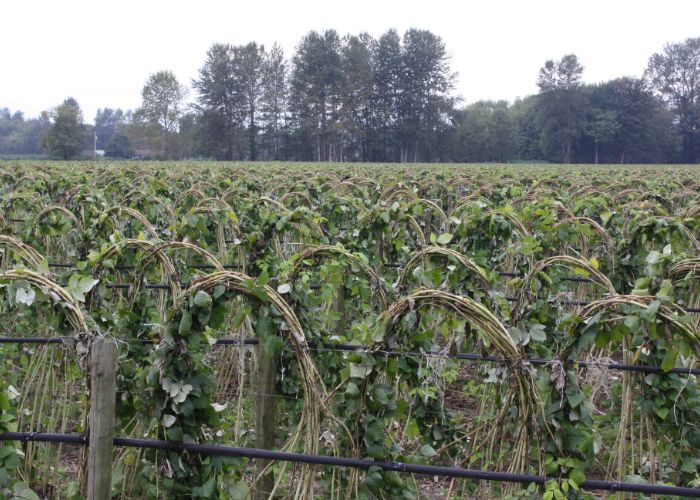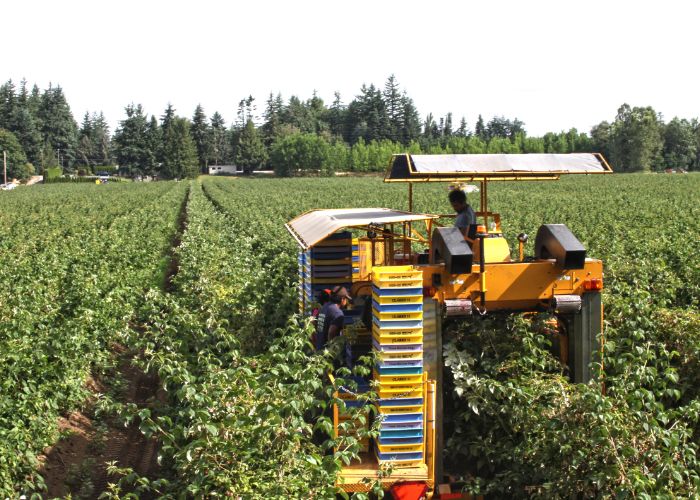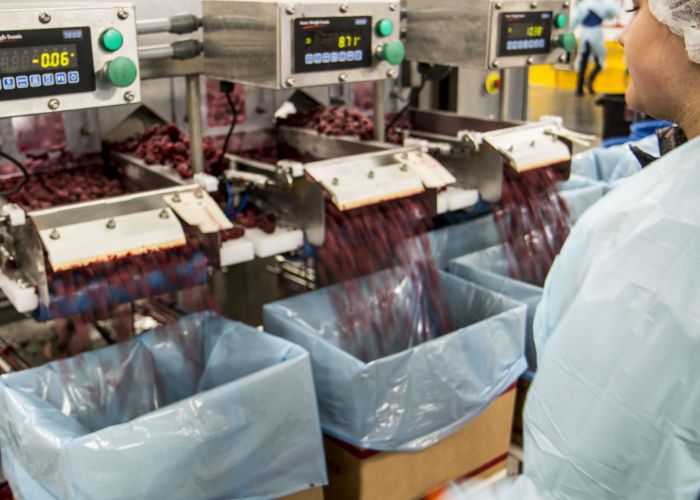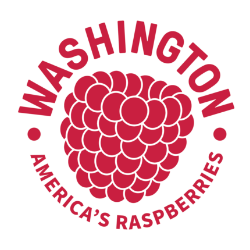
Farm to Freezer
Washington red raspberries are crafted exclusively for freezing, picked at the peak of ripeness and frozen within hours of being harvested, locking in flavor and nutrition.
Only the highest quality raspberries are selected for freezing, and the gentle flash-freezing process maintains the fruit’s flavor and nutrient integrity.
While growing and nurturing this delicate fruit is a 12-month operation, the intense summer harvest season lasts only a few weeks. Check out how this beloved berry goes from the farm to your freezer.


Planting
Raspberry canes thrive in climates with cool summers, mild winters and a rain-free harvest season.
Washington state is a good example of a perfect growing climate for red raspberries, where the soil is rich and well drained, and the climate provides a long, cool growing season.
Raspberries are typically planted on a raised mound, specifically designed for machine harvesting. Rows are spaced 10 feet apart and utilize a wire trellis system consisting of a top wire and two side wires to support the canes on which the berries grow. Growing raspberries is labor intensive, as the canes require tending year-round until ready to harvest.


Harvesting
The Washington raspberry harvest typically lasts about six weeks (July-August).
Washington red raspberries are machine harvested.
Once the raspberries are ripe, harvester machines are driven through the fields to collect the ripe berries. The machine has finger-like structures inside that lightly shake the raspberry canes, gently freeing only the ripe raspberries from their canes. They drop into the machine and are collected for processing.
One machine can pick 20 to 25 acres of raspberries in single a day and fields are generally picked on a two- or three-day picking rotation. There are many benefits to machine harvest, among which are food safety and the ability to harvest quickly.


Processing
Once the berries are collected, they’re quickly delivered to the processing facility, cooled and prepared for freezing within four to six hours.
At the processing facility, raspberries are cleaned using just water.
Any field debris, like leaves, are removed. Then, the raspberries travel through a flash-freezing tunnel where they are frozen within minutes using just cold air.
Once frozen, raspberries are sorted, packaged and ready to be shipped out to grocery shelves or for use in other food products like jelly, yogurt, ice cream and more.

